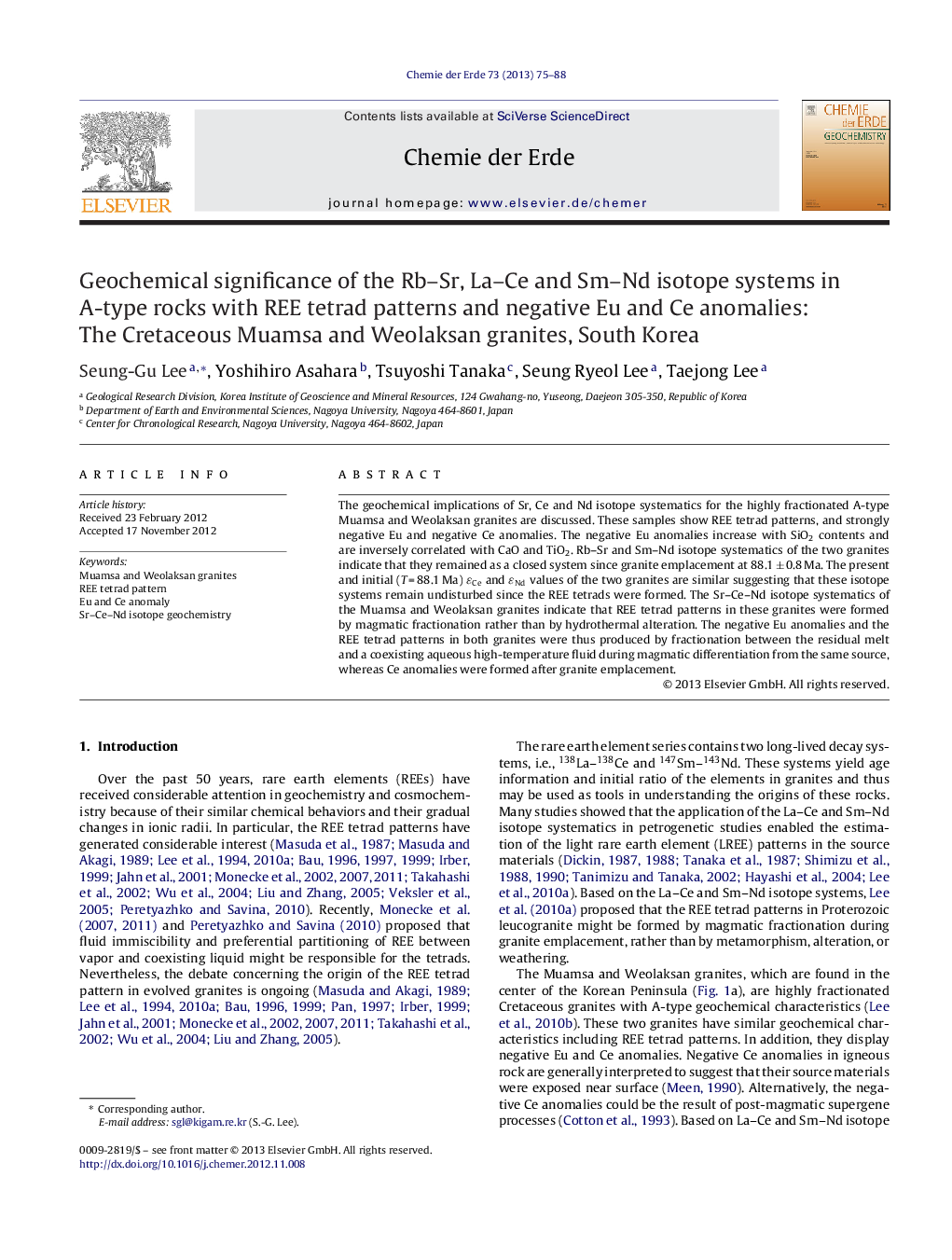| کد مقاله | کد نشریه | سال انتشار | مقاله انگلیسی | نسخه تمام متن |
|---|---|---|---|---|
| 4406826 | 1307322 | 2013 | 14 صفحه PDF | دانلود رایگان |

The geochemical implications of Sr, Ce and Nd isotope systematics for the highly fractionated A-type Muamsa and Weolaksan granites are discussed. These samples show REE tetrad patterns, and strongly negative Eu and negative Ce anomalies. The negative Eu anomalies increase with SiO2 contents and are inversely correlated with CaO and TiO2. Rb–Sr and Sm–Nd isotope systematics of the two granites indicate that they remained as a closed system since granite emplacement at 88.1 ± 0.8 Ma. The present and initial (T = 88.1 Ma) ɛCe and ɛNd values of the two granites are similar suggesting that these isotope systems remain undisturbed since the REE tetrads were formed. The Sr–Ce–Nd isotope systematics of the Muamsa and Weolaksan granites indicate that REE tetrad patterns in these granites were formed by magmatic fractionation rather than by hydrothermal alteration. The negative Eu anomalies and the REE tetrad patterns in both granites were thus produced by fractionation between the residual melt and a coexisting aqueous high-temperature fluid during magmatic differentiation from the same source, whereas Ce anomalies were formed after granite emplacement.
Journal: Chemie der Erde - Geochemistry - Volume 73, Issue 1, March 2013, Pages 75–88